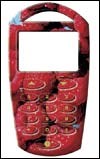Published
Five Things to Know About ‘In-Mold Everything’
Why not do it in the mold?
Why not do it in the mold? That was the question addressed last month at a two-day conference sponsored by Plastics Technology in Columbus, Ohio. If you missed it, the 345-page book of proceedings is still available. It contains 24 papers explaining the in-mold advantage in quality, productivity, and cost. Here are five points summing up the overall thrust:
- In-mold has momentum: If labor savings, cost savings, improved quality, and reduced environmental liabilities mean anything—which of course they do—then you’re going to see more and more conversion of secondary operations to in-mold decorating, labeling, finishing, and assembly. Even thermoformed packaging is getting into in-mold labeling. New and less costly automation for IML will make it affordable for smaller customers.
- Quality is the trump card: In some cases, quality is a stronger incentive than cost. A speaker from mega-molder Nypro Inc. said in-mold labeling doesn’t cost less than post-mold printing on rigid containers, but IML provides better aesthetics that boost retail sales. On the other hand, in-mold film decorating saves painting costs and provides a more durable finish.
- Don’t wait too long: Right now, a molder can differentiate itself by adding value in the mold. But that may not last long. Even China is getting into IML.
- Paint is not dead. It just went in-mold. After 20 years in gestation, in-mold painting is ready to be born. Japanese cars with in-mold painted parts are on the road now.
- Don’t jump in unprepared: To get a piece of the in-mold action, you’ll have to educate yourself on the requisite automation, in-mold films and labels, and high-productivity tooling such as stack molds and rotating center stacks. For in-mold painting, you’ll probably want the precision of an all-electric press.














